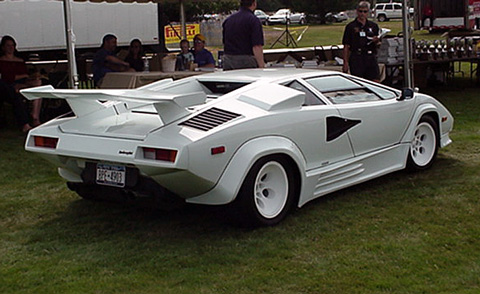A few quibbles: 1) speedforms have been made out of foam and clay forever, and speedforms lend themselves much more cleanly to curves. 2) Curves are much harder to create in thick metal. The Chrysler airflow (and similar) were largely hand-made using body hammers and English wheels, which was simply inapplicable to mass production. Boxy fenders and the like are largely stamped out of big sheets and then spot-welded for fit; the orthogonality of the build is managed through body-on-frame construction. This made cars heavy and indestructible, which transmitted shocks and impact to the occupants. "rounded" designs largely require thinner metal, which requires more precise construction, which lends itself to unibody construction, which lends itself to "crumple zones" and aerodynamics. It was a confluence of events: fuel economy, safety standards, improved manufacturing techniques. 3) Stamping a flat piece of metal into an angular fender doesn't require much in the way of die lay-up. Stamping a flat piece of metal into a rounded fender requires much more precise die construction, and more precise die construction becomes a lot easier with CNC machining and computer-aided design, as they mentioned. They're also half-right about European cars being more rounded. I mean, c'mon: 0.38 drag coefficient on that thing. Might as well be a barn door. At the same time, I grew up with these: Silly little things had a drag coefficient of 0.17. There wasn't anything to compete with it until the Gen 2 Prius. Had a belly pan and everything. We took ours to Mexico and were getting 70MPG with two adults and two children on Mexican gas.
